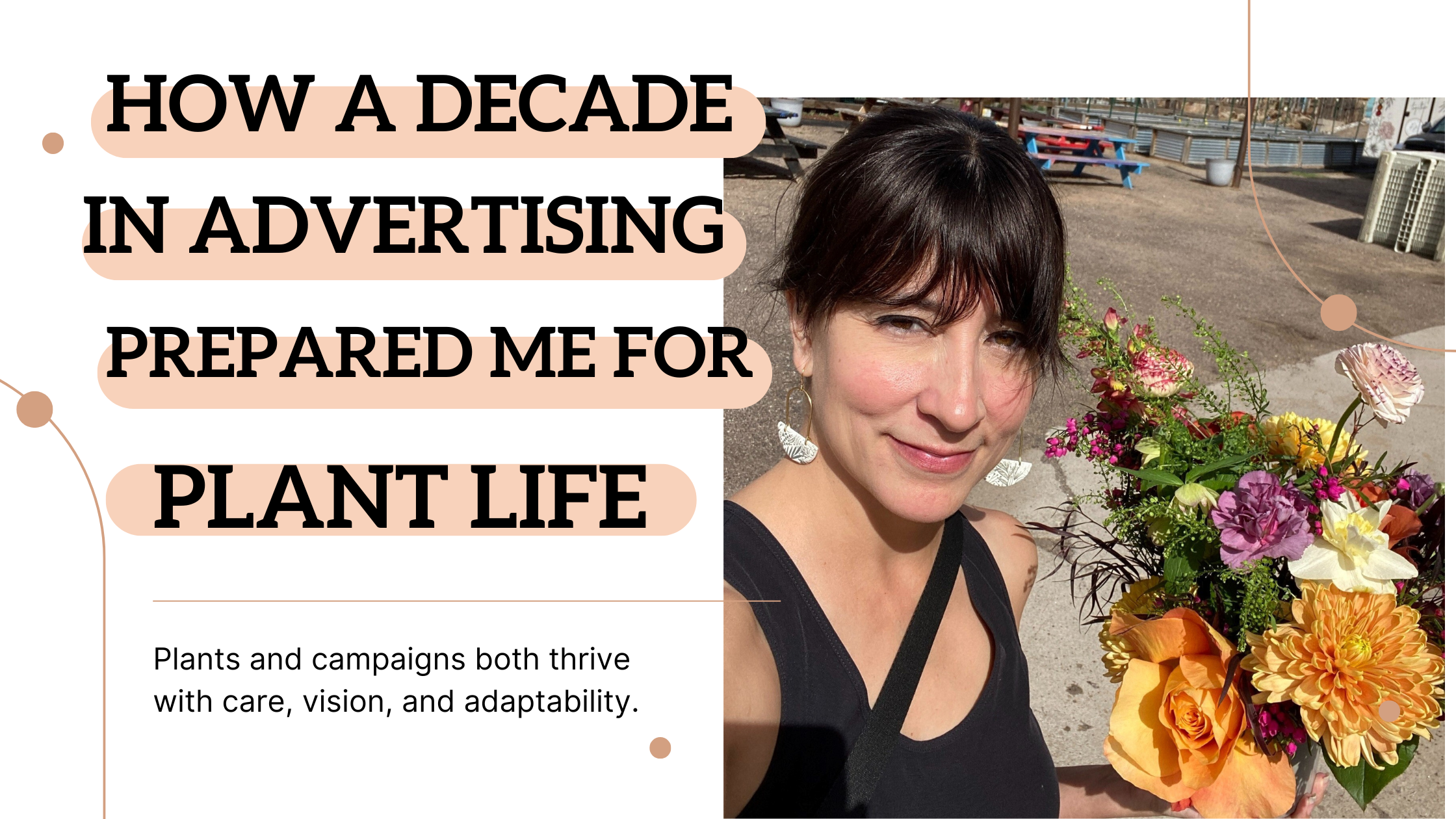How a Decade in Advertising Prepared me for a Life Among Plants
I didn’t wake up one day and decide to leave creative services for horticulture. It wasn’t an epiphany—it crept in gradually until one day, it was the whole picture.
So when I shifted to the plant world after 15 years in account service, I didn’t see the parallels at first. But every deadline, every strategy, every fire drill had already prepared me to nurture growth, adapt to uncertainty and cultivate something.
Let’s take a few classic adages from the garden and see how they apply to branding, design, marketing and advertising, shall we?
Control is an illusion, adaptation is everything.
Both industries run on creativity, adaptability and an almost ridiculous tolerance for starting over. A campaign may not get wiped out overnight by a freak hailstorm, but just when you think you’ve nailed the perfect setup—whether it’s a garden bed or a launch—something unexpected rolls in. Japanese beetles, rabbits, grasshoppers, a client with “just a few more thoughts.” Control is a myth.
New trends all the time
Creative trends come and go—one year, it’s all about minimalism, the next, it’s bold colors and nostalgia. Gardening isn’t much different. Succulents take over, then native grasses have their moment, and suddenly, everyone’s deep into cottagecore. And the Pantone color of the year is just as influential on plant sales as design. Try to keep up. But some things last. Coneflowers, Rudbeckia, Karl Foerster, the garden workhorses—just like the classic principles of design you learn in art school—hold steady no matter what’s trending.
The brief, the plant tag
Every project starts with a creative brief—a guidepost, not a guarantee. It lays out the vision, constraints and conditions for success. It won’t do the work for you, but it keeps you on track, ensuring every decision serves the bigger picture.
A plant tag is the same. It tells you exactly what a plant needs—light, water, space—so it has the best chance to thrive. Ignore it, and you’ll miss the target. Follow it, and you’re working with the plant instead of against it. So in both cases, success starts with understanding the conditions you’re working within.
Thriller, spiller, filler: the perfect recipe for…campaigns?
A killer deliverable, like a well-designed container, needs a Thriller to steal the spotlight, a bold first impression turning heads, making people stop. It needs a Filler, the steady, structured content holding everything together. And it needs a Spiller, the element that breaks the boundaries, spreading naturally, taking on a life of its own, going viral.
Clients are like plants
Some are dazzling annuals—showstoppers for a season before disappearing. Others are perennials, slow to take off but worth the wait, coming back year over year. And then there are the invasives…
At the end of the day, both industries are full of people wildly obsessed with growth. Just like the determined plants you see pushing through sidewalk cracks, tenacious people in both fields will always find a way.
First they sleep, then they creep, then they leap
A brand, like a perennial, doesn’t take off overnight—it’s a process. First, it sleeps, settling in beneath the surface while the world wonders if anything is happening at all. Then, it creeps, stretching outward, gaining traction, slowly earning its place. And finally, it leaps—thriving, established, building its equity season after season.
You learn when to walk away
You know when you’ve exhausted every possible version of a concept and it’s time to stop tweaking. And so many great ideas still lie on the cutting room floor.
In gardening, you eventually accept that some plants just aren’t meant to thrive where you put them. You tried, you nurtured, you followed all the guidelines. But sometimes, you just have to sigh, yank it out, and move on. But don’t give up.
The best laid plans are still just plans
Brand launch or vegetable garden - you can plan, research and map everything out to the last detail. But at some point, you just have to plant the damn thing and see what happens.
Plants and brands need the right conditions and someone who believes in their potential before anyone else does.
Advertising taught me how to grow ideas. Gardening taught me how to stop gripping so tightly, trust the process, and see failure as a step forward.
A strong brand, like a thriving garden, doesn’t exist in isolation—it’s part of something bigger. The best work, whether in creative services or horticulture, isn’t about what you build, but how it resonates with the landscape around it. Because in the end, growth—real, lasting growth, takes time, the right conditions and a little faith in what’s coming next.
Find Meg’s garden shenanigans on insta at meggrows303

